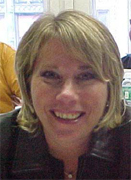Magnetism
and Electricity
Project URL:
http://teachersnetwork.org/teachnet-lab/ps101/bglasgold/magnetism/magnetism_contents.htm
How it works:
If you ask
any of your young students what magnets are used for, they will
probably say
"To keep things on the refrigerator!" They do not know
that magnets are used in almost every appliance in their homes. They
also have no idea that magnetism and electricity are related. This unit
acquaints the students with magnetism and
the properties of magnets, as well as how magnets are used in the home
and industry. The students learn by reading books on the topic as well as
by experimenting with magnets, and they make their own compasses and
learn how to use them. They also become acquainted with the
vocabulary related to magnetism. From there they explore
the properties of electricity and become familiar with related vocabulary
and the proper use and safety
involved with electricity. They make a complete circuit to
illuminate a
light bulb and test materials for conductivity and insulation.
The computer is used to create webs, complete databases, import graphics,
perform research, and do online quizzes
and assessments. The students also use a digital camera and a digital
video camera to chronicle their work and add it to the lessons.
Standards addressed:
The students demonstrate an understanding of the
properties, position, and motion of objects and materials, and of light, heat, electricity, and magnetism. They ask questions
about natural phenomena, use technology and tools to gather and
analyze data, and represent that data in
multiple ways. They show scientific competence by completing an
experiment and demonstrating the writing of scientific notation, and
meet ELA performance standards in producing an informational report.
Materials
used:
Materials used include magnets, compasses, circuits, batteries, wires,
nails, light bulbs, flashlights, and various objects for testing (nails,
paper clips, rubber, Styrofoam, wood, glass, etc.). Technology
materials include a computer with Internet access (for graphing
and research), a scanner, and a digital camera and video camera. Various types of software and videos
can also be used.
The students:
Magnetism and Electricity is suitable for students of any ability. It can be
simplified for slower learners and enhanced with advanced
programs for students of above-average ability. It was designed
for third and fourth graders, but it is appropriate for lower and upper
grades as well, as long as the work is geared to their level. It is a
good idea to group the students according to their abilities. They
need to know how to conduct research on the Internet, or to access web
sites provided by the teacher, and a knowledge of
graphing is important.
Overall value:
This program's best feature is its use of the computer for research.
The Internet is full of information and it brings
visual and audio components that are not in textbooks. Employing the computer to graph their work and see their digital pictures of
the work
is exciting for the students. The interactive programs
they complete give immediate gratification, and the unit addresses both
cognitive and affective, as well as psychomotor domains. The students use materials to assemble an electric circuit and test materials,
including magnets and compasses, and they use the knowledge gained to formulate bar
graphs and pie charts, and to exercise and develop their reasoning
skills.
Tips:
Teachers must research Internet sites beforehand and find what is
appropriate for what they want to teach. Have all materials on hand.
Make sure batteries work, magnets are labeled with poles, and students
are motivated. Read books explaining the topic beforehand to get them
excited.
|

About the teacher:
Bonnie Glasgold is a science enrichment teacher at P.S. 101 in Brooklyn, New York. She has been a teacher for 23 years,
with nine years in this subject field. She has been the UFT chapter leader in her
school for ten years, and has been involved with TeachNet for
over four years. She has published many science units, including
a series on the world's biomes as well as this current
unit on magnetism and electricity.
Email:
bmglas@aol.com
Subject Areas:
Science
Mathematics
Technology
Grade Levels:
3-5
|